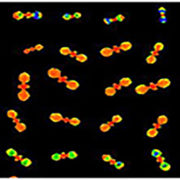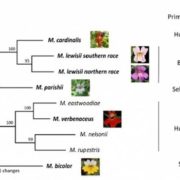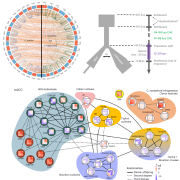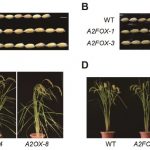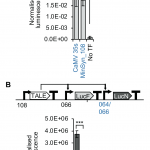Genomic history and ecology of the geographic spread of rice (Nature Plants)
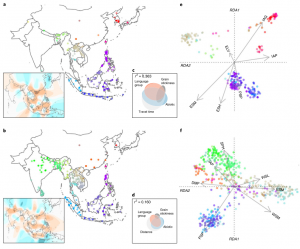 Originating in China’s Yangtze Valley ~9,000 years ago, rice (Oryza sativa) is a staple food for over half of the world’s population. While rice domestication has been well-researched, studies addressing the species’ diversification and spread post-domestication are lacking. Here, Gutaker et al. tell the “first draft of the story” of how rice was dispersed across Asia (check out this “behind the paper” piece and Twitter thread). Several fruitful collaborations facilitated an interdisciplinary modeling approach using genomic (1,400+ landrace whole-genome sequences), historical, archaeobotanical, geographical, and palaeoclimatic data. Using these methods, robust hypotheses were formed regarding the dispersal of two rice subspecies, japonica, and indica. For example, palaeoenvironmental models revealed a global cooling event ~4,200 years ago, and contemporaneously genetic data indicated a dramatic bottleneck in tropical japonica populations. A major split between temperate and tropical lineages occurred, likely resulting from some local varieties slowly adapting to northern latitudes (becoming temperate), while tropical varieties migrated to Southeast Asia where they diversified rapidly, and archaeological and historical evidence supported these patterns. Furthermore, temperature and heat accumulation gradients were identified as key environmental factors implicating genomic diversity between tropical and temperate japonica varieties. A greater understanding of how environmental factors shaped geographic distributions and evolutionary adaptations of domesticated crop species will provide valuable insights into how crops deal with imminent climatic changes, contributing to future breeding efforts and global food security. (Summary by Caroline Dowling @CarolineD0wling) Nature Plants 10.1038/s41477-020-0659-6
Originating in China’s Yangtze Valley ~9,000 years ago, rice (Oryza sativa) is a staple food for over half of the world’s population. While rice domestication has been well-researched, studies addressing the species’ diversification and spread post-domestication are lacking. Here, Gutaker et al. tell the “first draft of the story” of how rice was dispersed across Asia (check out this “behind the paper” piece and Twitter thread). Several fruitful collaborations facilitated an interdisciplinary modeling approach using genomic (1,400+ landrace whole-genome sequences), historical, archaeobotanical, geographical, and palaeoclimatic data. Using these methods, robust hypotheses were formed regarding the dispersal of two rice subspecies, japonica, and indica. For example, palaeoenvironmental models revealed a global cooling event ~4,200 years ago, and contemporaneously genetic data indicated a dramatic bottleneck in tropical japonica populations. A major split between temperate and tropical lineages occurred, likely resulting from some local varieties slowly adapting to northern latitudes (becoming temperate), while tropical varieties migrated to Southeast Asia where they diversified rapidly, and archaeological and historical evidence supported these patterns. Furthermore, temperature and heat accumulation gradients were identified as key environmental factors implicating genomic diversity between tropical and temperate japonica varieties. A greater understanding of how environmental factors shaped geographic distributions and evolutionary adaptations of domesticated crop species will provide valuable insights into how crops deal with imminent climatic changes, contributing to future breeding efforts and global food security. (Summary by Caroline Dowling @CarolineD0wling) Nature Plants 10.1038/s41477-020-0659-6
[altmetric doi=”10.1038/s41477-020-0659-6″ details=”right” float=”right”]


